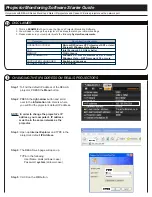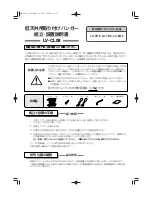
/2
clk2x
clk1x
/2
clk2x
clk1x
/2
clk4x
clk2x
hd_venc_d_clk
hd_venc_g_clk
sd_venc_clk
hd_venc_d_dvo1
hd_venc_d_dvo2
sd_venc
hdmi_clk
dvo1_clk
sd_dac_clk
vbi_clk_sd
hdmi_clk_on
dvo1_clk_on
clk1x
/4
hd_venc_d_clk1x_select
hd_venc_g_clk1x_select
dvo1_clk_select
0
0
0
dvo2_clk
dvo2_clk_on
0
dvo2_clk_select
/2
clk2x
clk1x
hd_venc_a_clk
hd_venc_a_hdcomp
hd_venc_a_clk1x_select
0
hd_dac_clk
0
vbi_hd_clk_select
vbi_clk_hd
Description of the Subsystem
59
SPRUHI7A – December 2012 – Revised June 2016
Copyright © 2012–2016, Texas Instruments Incorporated
High-Definition Video Processing Subsystem (HDVPSS)
1.1.8 Clocking
The following section discusses the steps needed to enable HDVPSS clocking.
1.1.8.1
Enable PRCM for HDVPSS Module
Please refer to the
PRCM
chapter to enable PRCM for HDVPSS.
1.1.8.2
Enable HDVPSS Internal Clocks
In HDVPSS, some of the data paths and modules are divided into different clock domains. This enables
the user to switch off the paths/modules that are not used, at HDVPSS level. The CLKC
→
CLKC Module
Clock Enable Register (address: 0x48100100) is used to enable the paths that fall in separate clock
domains (as mentioned in the CLKC register).
1.1.8.3
VENC Clock Source (HDMI or DVO1/DVO2/HDCOMP/SDVENC Pixel Clock)
shows the derivation of pixel clock for different VENCs. In this figure, hd_venc_d_clk (external
clock source) directly drives the HDMI/DVO1 (hd_venc_d) video encoder , hd_venc_a_clk(external clock
source) directly drives the HDCOMP(hd_venc_a) video encoder, and hd_venc_g_clk (external clock
source) directly drives the DVO2 (hd_venc_d) video encoder.
Figure 1-15. Video Encoder Clock/Control Diagram
The output of the muxes (shown in the above diagram) can be controlled in the CLKC Video Encoder
Clock Select (address: 0x48100114) register. Please make sure the required VENCs are enabled in the
CLKC Video Encoder Enable (address: 0x48100118) register.
















































